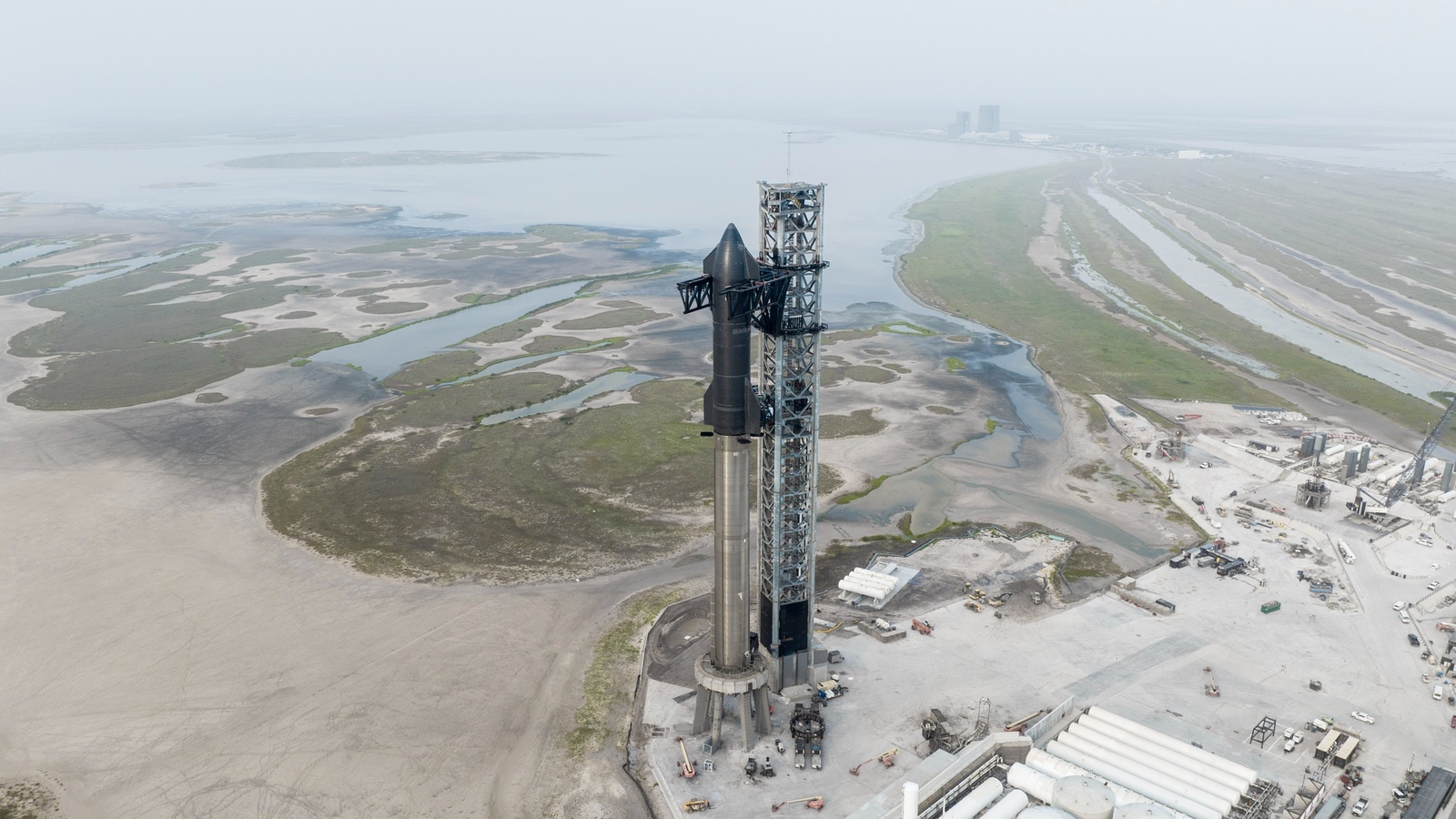WASHINGTON — The Federal Aviation Administration has issued a launch license to SpaceX to the first integrated test flight of the company’s Starship/Super Heavy launch vehicle, scheduled for no earlier than April 17.
The FAA announced late April 14 that it issued the license for the launch from the company’s Starbase test site in Boca Chica, Texas. A launch window for the flight opens at 8 a.m. Eastern April 17 and runs through 10:30 a.m. Eastern, with backup opportunities April 18 through 22.
Anticipation for the license had been growing in recent days as SpaceX said it completed all preparations for the launch. The FAA issued a temporary flight restriction early April 14 for the April 17 launch window, followed later in the day by a similar restriction April 18.
“After a comprehensive license evaluation process, the FAA determined SpaceX met all safety, environmental, policy, payload, airspace integration and financial responsibility requirements,” the FAA said in a brief statement announcing the license. That license is valid for five years, although it currently only covers the upcoming launch.
On the flight, a Starship vehicle, atop a Super Heavy booster, will lift off from Boca Chica. The Super Heavy’s 33 Raptor engines will shut down 2 minutes and 49 seconds into flight, followed three seconds later by stage separation. The booster will later perform boostback and landing burns for a “landing” on the water in the Gulf of Mexico but will not be recovered.
The Starship upper stage will fire its engines until 9 minutes and 20 seconds after liftoff. That will place the vehicle on a “nearly orbital” trajectory, an FAA official said on background, reaching a peak altitude of about 235 kilometers before reentering. It will splash down near Hawaii about 90 minutes after liftoff and, like the Super Heavy booster, not be recovered.
The award of the license concludes an extended review process. The FAA official said the agency spent more than 500 days reviewing the application, which SpaceX amended several times during that process. That is the longest the agency has spent on a single launch license application.
That official noted that extended time was also due to the complexity of the application and the size of the vehicle, the largest ever to seek a commercial launch license. That created, the official said, a strain on the resources available on the agency to both review that application and work on other license applications.
The FAA concluded an environmental review of Starship launches from Boca Chica in June 2022, allowing such launches to proceed but requiring SpaceX to carry out more than 75 mitigations to address concerns raised by the review. The FAA official said those mitigations were a mix of things SpaceX needed to do before the first launch as well as other, ongoing activities and those that take place after launch or in the event of a mishap. The agency hasn’t disclosed how many mitigations fell into each category.
The FAA official acknowledged that, this being the first flight of the combined Starship and Super Heavy, there is a higher risk of a mishap. First launches by ABL Space Systems’ RS1 rocket in January and Relativity Space’s Terran 1 in March, both licensed by the FAA, ended in failure.
“The FAA is responsible for protecting the public during commercial space transportation launch and reentry operations,” the FAA stated. “We carefully analyzed the public safety risks during every stage of the mission and required SpaceX to mitigate those risks.”
The FAA will also take several airspace integration measures to keep aircraft out of restricted airspace. That includes using “triggers” during launch preparations, such as fueling of the rocket, to warn aircraft that the launch is approaching and to avoid the restricted airspace. The FAA will also institute what it called “time-based procedures” for the launch, rerouting only those aircraft directly affected by launch activities, something the FAA does for launches from Florida.
The launch will also use the FAA’s Space Data Integrator, which takes live telemetry from the rocket and uses that to alert controllers when airspace can be reopened. That can minimize the time that airspace needs to be closed for a launch.
